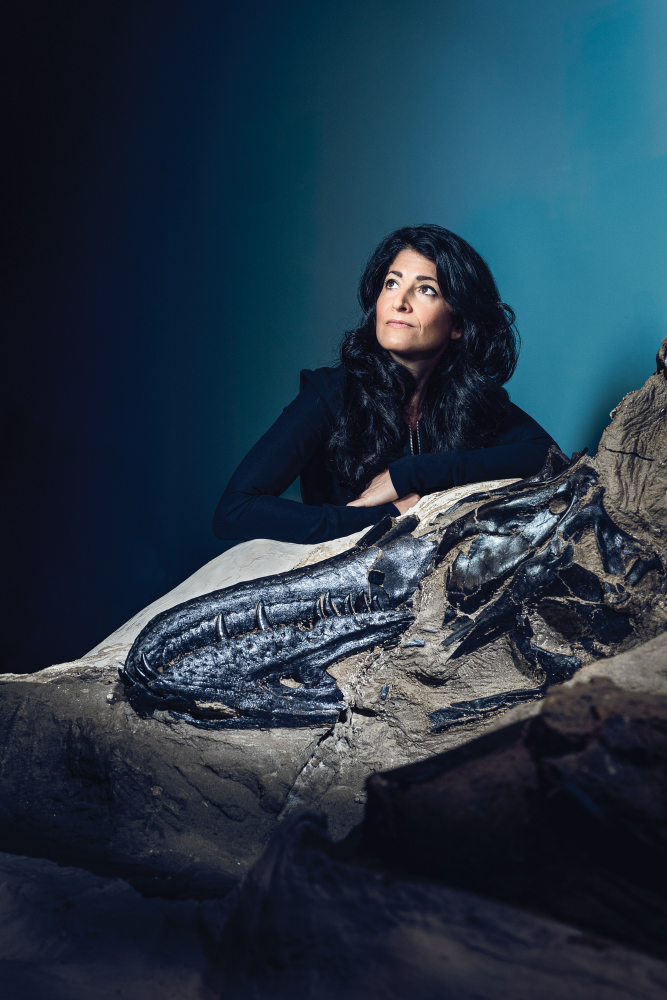Walter Magazine: How the Dueling Dinosaurs Got to Raleigh
For immediate release ‐ May 06, 2021
Contact: Micah Beasley, 919.707.9970. Images available upon request
The Dueling Dinosaurs is featured in the latest edition of Walter magazine telling the story of the fossil’s journey from the Hell Creek Formation in Montana to our Museum!
Check out this excerpt featuring Dr. Lindsay Zanno below:
“The North Carolina Museum of Natural Sciences hosts over a million visitors in a normal year within its downtown Nature Exploration Center and Nature Research Center. For more than a century, it’s been the place to see state-of- the-art exhibits and experience nature and science first-hand. Many of the state’s schoolchildren have their first encounter with fossils and real dinosaur specimens there on field trips.
From its inception, the museum has been a repository of the state’s natural collections, from ancient fossils and naturalist drawings to its growing collection of living specimens. The dozens of scientists, researchers, and educators who work at the museum are leaders in their respective fields and all share a vision for collaborative teaching and hands-on learning.
 Dr. Lindsay Zanno with the T. rex skull. Photo: Justin Kase Conder/Walter.
Dr. Lindsay Zanno with the T. rex skull. Photo: Justin Kase Conder/Walter.
One of those leaders is paleontologist Dr. Lindsay Zanno. Zanno’s passion for her work and dedication to sharing it with the public are not simply infectious, they’re inspirational.
Zanno completed her undergraduate work at the University of New Mexico and her graduate work at the University of Utah. Her work as a paleontologist has taken her all over the globe: from the Field Museum in Chicago to Mongolia and Thailand to vast swaths of the American West.
She works with exploratory teams, usually for months in the field, to track down fossils and study how changing climate and environmental conditions affected life on land during the Cretaceous period. Zanno has discovered the remains of more than a dozen new species, including Siats, one of the largest meat-eating dinosaurs on the continent, and Moros, North America’s tiniest Tyrannosaur. Today she calls Raleigh and the Museum of Natural Sciences home.
The museum’s longtime partnership with North Carolina State University and deep commitment to citizen science were what drew Zanno to the institution. She has helped grow the already well-known paleontology program over the past decade. She works in a joint appointment between the museum and NC State and leads teams of students into the field every year.
“After being here for six or seven years and seeing how successful of an enterprise the Nature Research Center is, I was asking myself, what’s next for the museum?” says Zanno. “How do we keep pushing the boundaries and being on the leading edge of connecting the public with science? What can we do to take it to the next level?”
Over the years, Zanno had heard about Phipps’ incredible discovery — two fully intact dinosaurs, frozen at a specific moment in time. If the condition of the specimens was even half as good as reported, then the find could be a game-changer: the “Dueling Dinosaurs,” as they had become known, would be among the most complete skeletons ever discovered of two iconic dinosaurs. And the T. rex fossil would be the only complete skeleton of a T. rex known anywhere in the world. These fossils could challenge everything we know about dinosaurs, including how these very famous species interacted. Bringing them to NCMNS would make the museum a global center for paleontological study.
And then there was the mystery: how did these two dinosaurs get buried so close together? “We want to know how these animals died, were they interacting?” says Zanno. “You can imagine how many times in a million years two animals get buried in a moment of time together like that, a predator and prey. It’s so incredibly rare.” Zanno wanted those dinosaurs to head south for good.”
Read the entire Walter magazine Dueling Dinosaurs article on their website.
For more information about our upcoming activities, seasonal news and ground-breaking research, follow @NaturalSciences on Instagram, Twitter and Facebook. Join the conversation with #visitNCMNS.

